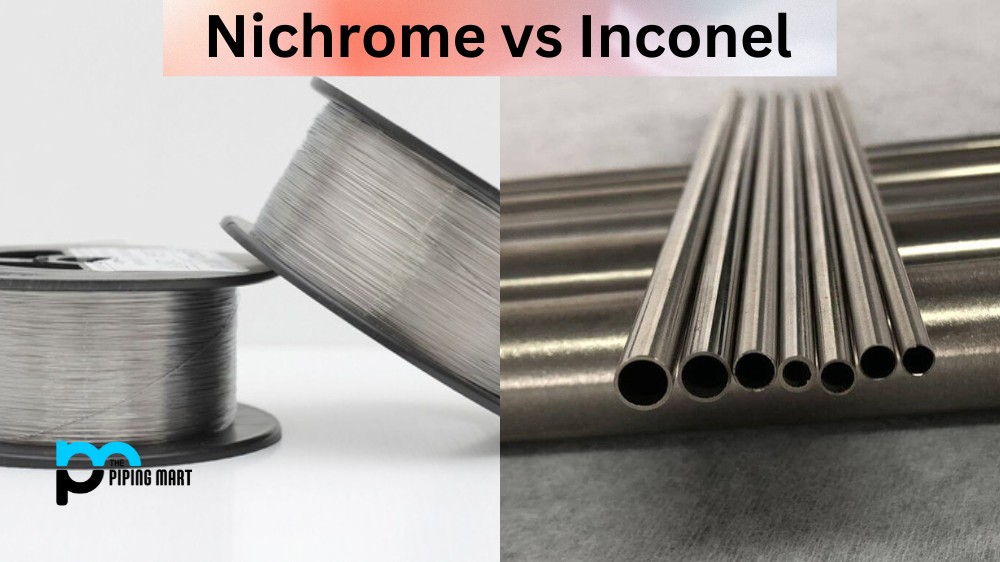Nichrome and Inconel are two of the most popular choices when selecting the right material for high-temperature applications. Both materials offer unique benefits and have distinct properties that make them ideal for specific applications. So, which one is best for you? In this blog post, we’ll look at the differences between these two materials and help you make an informed decision.
What is Nichrome?
Nichrome is a non-magnetic alloy of nickel and chromium used in heating elements. It has high resistivity, low-temperature coefficient of resistance, and good corrosion resistance. Its properties make it the perfect material for use as a heater element in appliances like ovens, toasters, and water heaters.
What is Inconel?
Inconel is a high-temperature and corrosion-resistant nickel, chromium, and iron alloy. It is used in many industries due to its strength at extremely high temperatures, making it ideal for applications such as aerospace components and chemical process components. Inconel is also used in the nuclear power industry because of its superior strength against radiation exposure.
Difference Between Nichrome and Inconel
Properties
Nichrome is a nickel-chromium alloy commonly used in applications requiring high heat and corrosion resistance. It comprises 80% nickel and 20% chromium, giving it high resistance to oxidation and corrosion. Nichrome is also known for its high electrical resistivity, which makes it an ideal material for heating elements in electrical appliances.
Inconel is a family of nickel-chromium alloys known for their high temperature and excellent corrosion resistance. Depending on the specific grade, it comprises various combinations of nickel, chromium, iron, and other elements. Inconel is commonly used in applications that involve extreme temperatures, such as gas turbine engines and chemical processing plants.
Advantages
One of the main advantages of Nichrome is its affordability. It is significantly cheaper than Inconel, which makes it a popular choice for applications that require high-temperature resistance but have a tight budget.
One of the main advantages of Inconel is its high-temperature strength. It can withstand temperatures up to 1250°C, making it ideal for high-temperature applications where other materials fail. Additionally, Inconel has excellent corrosion resistance, which allows it to withstand harsh environments and chemicals.
Cost
As mentioned earlier, Nichrome is significantly cheaper than Inconel, making it a popular choice for budget-conscious applications.
Temperature Resistance
While Nichrome can withstand temperatures up to 1200°C, Inconel can withstand temperatures up to 1250°C. This makes Inconel the better choice for applications that involve extreme temperatures.
Corrosion Resistance
Both materials offer excellent corrosion resistance, but Inconel is known for its superior corrosion resistance. This makes it the better choice for applications that require high corrosion resistance.
Applications
Nichrome is commonly used in electrical appliances such as toasters, hairdryers, and heating. It is also used in heating elements for industrial furnaces and ovens. Conversely, Inconel is commonly used in gas turbine engines, chemical processing plants, and aerospace applications.
Conclusion
In conclusion, Nichrome and Inconel are two excellent choices for high-temperature applications. Nichrome is an affordable option with high heat and corrosion resistance, while Inconel offers superior temperature and corrosion resistance. When selecting a material, it’s important to consider the application’s specific requirements and weigh each material’s pros and cons. Whether you choose Nichrome or Inconel, both materials offer unique benefits and can help you achieve excellent results in your application.

Abhishek is a seasoned blogger and industry expert, sharing his insights and knowledge on various topics. With his research, Abhishek offers valuable insights and tips for professionals and enthusiasts. Follow him for expert advice on the latest trends and developments in the metal industry.




